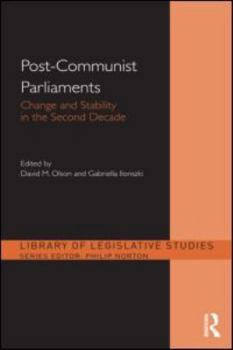Post-Communist Parliaments: Change and Stability in the Second Decade
At the end of the "founding" or initial decade, the new parliaments of post-Communist Europe had developed two distinct types: democratic and presidentially-dominated. Whilst in the early years, they had been characterised as "parliaments in adolescence," they have - through the second decade - continued to improvise but also elaborate their working relationships with both their chief executives and electorates. This book examines these...
Format:Hardcover
Language:English
ISBN:0415560837
ISBN13:9780415560832
Release Date:October 2011
Publisher:Routledge
Length:160 Pages
Weight:0.85 lbs.
Dimensions:0.6" x 6.3" x 9.2"
Customer Reviews
0 rating





